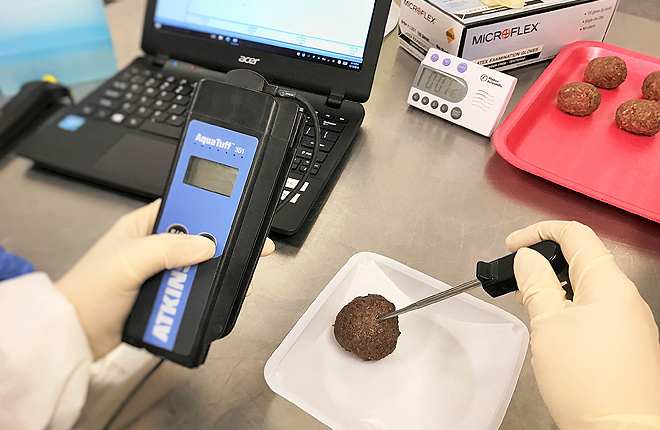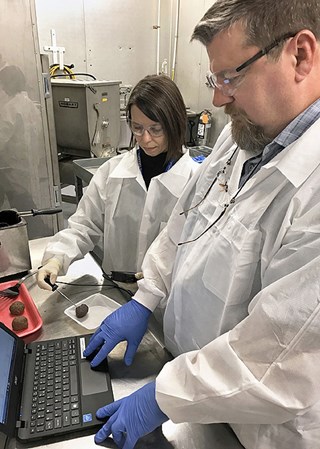Study Shows Safest Ways To Cook Meatballs
There is no single way to cook a meatball. Chefs and consumers prepare them with different meats, such as beef, pork, and veal; refrigerate or freeze them; use different cooking times and temperatures; and cook them in different appliances, such as a conventional oven or a deep-fryer. This makes coming up with a standard set of meatball cooking times and temperatures a major challenge.
|
|
Undercooked meatballs are a potential source of Shiga toxin-producing Escherichia coli (STEC). Each year, STEC bacteria cause an estimated 265,000 illnesses, 3,600 hospitalizations, and 30 deaths in the United States, according to the Centers for Disease Control and Prevention. STEC illnesses also cost an estimated $300 million in healthcare, lost wages, food recalls, and other expenses.
U.S. Department of Agriculture, Food Safety and Inspection Service guidelines specify that ground beef should be cooked to an internal temperature of 160 ˚F to minimize health risks from STEC. But not all cooks are going to check the temperature of their meatballs. Agricultural Research Service (ARS) scientists in Wyndmoor, Pennsylvania, have developed some practical methods for cooking meatballs at home, in restaurants, or in commercial or institutional kitchens.
The effort, by Anna C.S. Porto-Fett, John B. Luchansky, and colleagues, is part of a $25 million food safety grant from the USDA National Institute of Food and Agriculture.
“Since outbreaks and recalls continue to occur, it’s important that we do what we can to give chefs and consumers the best information possible regarding adequate cooking times and temperatures—for meatballs and related products,” Porto-Fett says.
The researchers inoculated samples of ground veal and ground beef with a cocktail of seven strains of STEC, hand mixed the samples with eggs and breadcrumbs, and shaped them into 40-gram meatballs (golf ball sized). They froze some of the meatballs at – 4 ˚F and refrigerated others at 39 ˚F for up to 18 hours before cooking.
The frozen or refrigerated meatballs were then cooked for various times at 350 ˚F in both a conventional oven and a deep-fryer using canola oil. The scientists found that deep-frying the frozen meatballs for 9 minutes or oven-baking them for 20 minutes reduced E. coli levels 100,000-fold, a regulatory target referred to as a “5-log reduction,” making them safe for consumption. The refrigerated meatballs required 5.5 minutes in the deep-fryer and 12.5 minutes in the oven to achieve the same 5-log reduction. The researchers found no differences between beef and veal meatballs in terms of STEC reduction.
Study results were reported in the May 2016 issue of the Journal of Food Protection.
It is common knowledge that ground meat needs to be thoroughly cooked to prevent food poisoning, and these findings provide clear and practical parameters for safely cooking meatballs.—Dennis O'Brien, ARS Office of Communications.
Key Facts
- Shiga toxin-producing E. coli (STEC) bacteria cause 265,000 foodborne illnesses a year.
- Proper cooking reduces the likelihood of illness from STEC.
- ARS scientists studied the best ways to reduce STEC in meatballs.
- Results provide practical parameters for cooks.
Full Story








